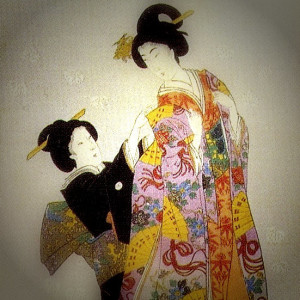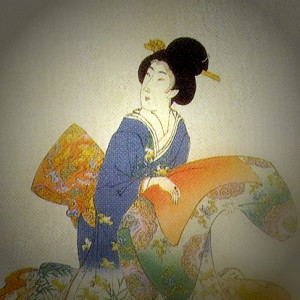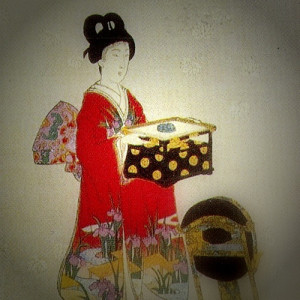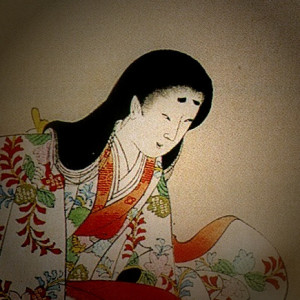The Court Lady and the Kabuki Actor
Edo (much later to become Tokyo), Japan, 1714
 ‘Hurry, or we’ll be late!’
‘Hurry, or we’ll be late!’
Ejima stood, arms outstretched, as her ladies milled around her, touching up her makeup and tugging her over-kimono into place. It was a beautiful garment of red silk with a golden phoenix embroidered across the back and a thick quilted hem that swirled at her feet. They tucked in a last strand of her glossy black hair which was swept up into an elegant loop at the back of her head.
She gazed around the room with its coffered inlaid ceiling, its gold leaf screens painted with birds and flowers and its pale straw matting edged with gold. A wind wafted through, setting the reed blinds swaying, and she strained her ears, imagining she heard the roar of crowds and smelt grilling octopus and incense smoke rising from the temples. But it couldn’t be. The grounds were too huge, the city and its noise and bustle too far away outside the palace walls.
The bush warbler in its cage in a corner of the room chirruped. ‘I’m no more free than you,’ she thought wistfully. She knew she should have been the happiest person on earth. She led a life of splendour, ease and luxury, and even the humblest of her attendants wore kimonos more lavish than people outside the palace could dream of. Yet, for all her wealth and privilege, she too couldn’t spread her wings and fly away. A lifetime of ritual and protocol stretched before her, laid out hour by hour, day by day, month by month, season by season.
 Under the wishing tree
Under the wishing tree A secret visit
A secret visit Through the side gate
Through the side gate